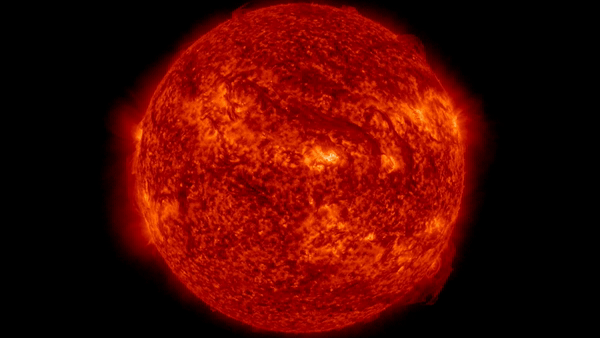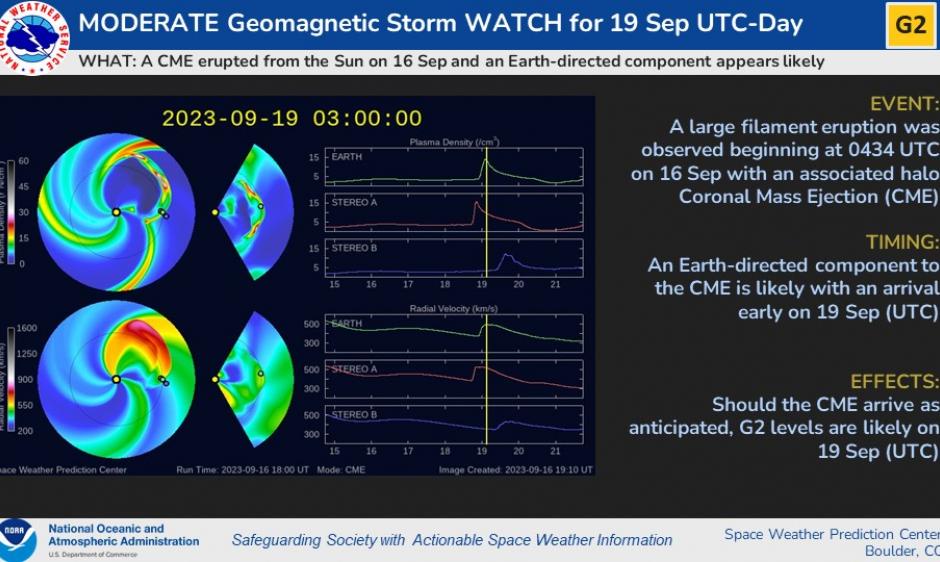Giant Solar Eruption Threatens Earth with Geomagnetic Storm
Solar physicist Keith Strong expressed his excitement about the colossal eruption, stating that it is the largest filament eruption he has ever witnessed in his over 50 years of solar observation. The eruption covers over half of the sun’s surface but surprisingly did not produce a big flare.
Geomagnetic storms, which are disturbances to Earth’s magnetic field caused by solar material from CMEs, can have various effects on our planet. NOAA ranks geomagnetic storms on a scale running from G1 to G5, with G5 being the most extreme level that can cause radio blackouts on the sunlit side of Earth for several hours.
The predicted G2 storm on September 19 could lead to extensive auroral displays and a limited blackout of HF radio communication on the sunlit side of Earth. Additionally, there may be a temporary loss of radio contact for tens of minutes and potential degradation of low-frequency navigation signals.
As we approach the peak of the sun’s 11-year solar activity cycle in 2025, it is expected that we will experience more extreme space weather events. However, predictions can change rapidly, as space weather can be unpredictable, much like weather on Earth.
Sources: Spaceweather.com, NOAA
A giant solar tendril, known as a solar filament, lashed out from th
This could be good news for aurora chasers. Should the CME arrive as anticipated, it could trigger a geomagnetic storm similar to the one on Sept. 12 that sparked auroras as far south as Colorado and Missouri, according to Spaceweather.com.
Related: Scientists may finally know why the sun's outer atmosphere is so freakishly hot
Geomagnetic storms are disturbances to Earth's magnetic field caused by solar material from CMEs — large expulsions of plasma and magnetic field from the sun's atmosphere.NOAA ranks geomagnetic storms on a scale running from G1, which could cause an increase in auroral activity around the poles and minor fluctuations in power supplies, up to G5, the most extreme level that can cause complete HF (high frequency) radio blackout on the entire sunlit side of the Earth lasting for a number of hours.
The predicted G2 storm on Tuesday (Sept. 19) could trigger extensive auroral displays and, according to NOAA, could result in a limited blackout of HF radio communication on the sunlit side and possible loss of radio contact for up to tens of minutes. There may also be degradation of low-frequency navigation signals for tens of minutes.
We can expect more extreme space weather events as the sun builds towards a peak in its 11-year solar activity cycle, expected to occur in 2025. But like weather on Earth, space weather is a fickle fellow and predictions can turn on a dime.
Join our Space Forums to keep talking space on the latest missions, night sky and more! And if you have a news tip, correction or comment, let us know at: community@space.com.






No comments:
Post a Comment